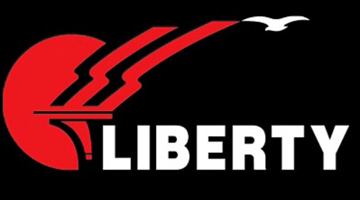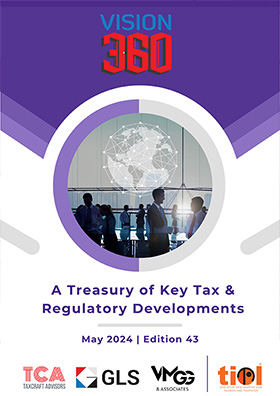CX - Statement recorded of authorised signatory - CCE who framed the charges demanding duty has ignored this admissible evidence and, therefore, SCN is not tenable in law: CESTAT
By TIOL News Service
CHANDIGARH, JULY 20, 2017: THE appellant is engaged in the manufacture of footwear under the brand name of Liberty . The appellant is also undertaking packing/repacking and labelling/re-labelling of imported footwear and which activity is notified as ‘manufacture' in terms of s.2(f)(iii) of the CEA, 1944.
During the period of dispute, the process of packing/repacking and labelling/re-labelling of containers or adoption of any other treatment to render the footwear marketable to the consumer were exempted from the duty under Notification No.6/02-CE dated 1.3.2002 and No.5/06-CE dated 1.3.2006.
The said notification exempted footwear subjected to any one or more of the following processes, namely -
(i) packing/repacking
(ii) and labelling/re-labelling of the containers
(iii) adoption of any other treatment to render the footwear marketable to the consumer.
The notification further mandated that the footwear should have been: (i) bearing a brand name or trade name of any person, (ii) in respect of which retail sale price has been declared and (iii) on which appropriate duty of excise or as the case may be, the additional duty has already been paid.
Summary of time period and grounds for duty demand are mentioned below -
|
Period involved
|
Ground for confirmation of duty
|
|
July 2005 to June 2006
|
Non-availment of exemption and paying excise duty thereby availing inadmissible cenvat credit
|
|
November 2004 to June 2005
|
Denial of Cenvat credit availed on inputs or input services which were used in the manufacture of exempted footwear in terms of Rule 6(1) of the CCR.
|
|
May 2006 to June 2006
|
- as above -
|
Against the confirmation of duty demands by the CCE, in appeal before the CESTAT, the appellant submitted that -
+ the exemption notification is optional and, therefore, bar of section 5A(1A) of CEA, 1944 is not applicable; credit availed and utilized for payment of duty cannot be required to be reversed in view of the decision in Ajinkya Enterprises = 2012-TIOL-578-HC-MUM-CX .
+ packing material is received in respective godowns, therefore, the question of availing credit does not a rise; invoices of packing material used in the exempted final products have been produced and on the said invoices no credit has been taken; Commissioner has not given any credence to this submission. Further, with respect to common services used by the appellant for dutiable as well as exempted final products, the appellant has already reversed proportionate credit , therefore, in terms of Rule 6 (3)(b) of CCR, the demand is not sustainable.
Following difference of opinion arose between the Members constituting the Division Bench and which was referred to the third Member -
|
Whether the Member (J) is correct in holding that the appellant are not required to pay 10% of the value of exempted goods on the fact that the appellant has produced invoices of packing material on which no Cenvat Credit has been taken by the appellant and have reversed proportionate Cenvat Credit availed on input services attributable to final exempted goods.
OR
The Member (T) is correct in holding that appellants are required to pay 10% of value of exempted goods by rejecting the contention of appellants that they have not manufactured exempted and dutiable goods at same premises in light of statement of Sh. M.M. Gulati and when appellants failed to produce any evidence of input stock register and footwear stock account in respect of exempted footwear at respective godowns.
|
We reported this order as 2017-TIOL-2065-CESTAT-CHD.
The matter was heard recently by the third Member (Technical) and who in a terse order observed thus -
25. I find that the show cause notice was issued on 14.02.2007. In the said show cause notice, in Para 24, it is recorded " The statement of Shri M.M. Gulati, Excise Manager shows that they were manufacturing dutiable and indigenous footwears as well as exempted imported footwears into their registered premises ". Whereas, in Para-5 of the said show cause notice, it has been stated " on 07.09.2006, the statement of Shri Arun Kumar, Authorised Signatory was recorded under Section 14 of Central Excise Act, 1944 who inter-alia stated that they had imported 30 containers of footwears and out of which 17 containers were cleared from their Karnal Unit after packing/ re-packing or labelling/ re-labelling, on payment of duty and Cenvat credit of CVD, Cess etc. was availed and rest of the 13 containers were directly off-loaded at their Namaste Chowk, Karnal and the same were cleared after being packing/ re-packing or labelling/re-labelling and no Cenvat credit was availed on those footwears as well as on the packing materials. " Since the statement of Shri Arun Kumar, the authorised signatory of the appellant was recorded under Section 14 of the Central Excise Act, 1944, it was an admissible evidence. The Commissioner who framed the charges in the said show cause notice dated 14.02.2007 has ignored such important admissible evidence and, therefore, the said show cause notice is not tenable in law. For the said reason, I agree with the opinion expressed by Member (Judicial) in the reference put up before me.”
In view of the Majority decision, the demand proposed in the show cause notice was held as unsustainable. The appeal was allowed with consequential relief.
In passing:
Section 129C(5) of the Customs Act, 1962 - If the members of a Bench differ in opinion on any point, the point shall be decided according to the opinion of the majority, if there is a majority; but if the members are equally divided, they shall state the point or points on which they differ and make a reference to the President who shall either hear the point or points himself or refer the case for hearing on such point or points by one or more of the other members of the Appellate Tribunal and such point or points shall be decided according to the opinion of the majority of these members of the Appellate Tribunal who have heard the case, including those who first heard it.
The Bombay High Court in the case of Kelkar Trading Corporation - 2006-TIOL-260-HC-MUM-CX held thus -
“12. The question that was referred did not give latitude and freedom to third member to take any view. The third member could have only taken either of the view expressed by the members of the bench. He could have either held that the matter needed to be remanded back to determine the question whether the activity carried on by the first appellant amounts to manufacture or that the duty demand deserve to be confirmed. But none other. The reference to the third member was limited. However, the order of third member shows that he entered the arena which was not the subject-matter of reference. He took the view which was not the view of either of the members of the bench. The third member to whom the question was referred plainly overstepped the limits of his jurisdiction . He proceeded as if he was completely free in dealing with the reference and could opine on the point which was not the difference of opinion. He ought to have confined to the difference between the two members as was reflected in the question referred to him. We hold that the third member could not go beyond the question and he erred in taking a view different from both the members.”
(See 2017-TIOL-2512-CESTAT-CHD)














